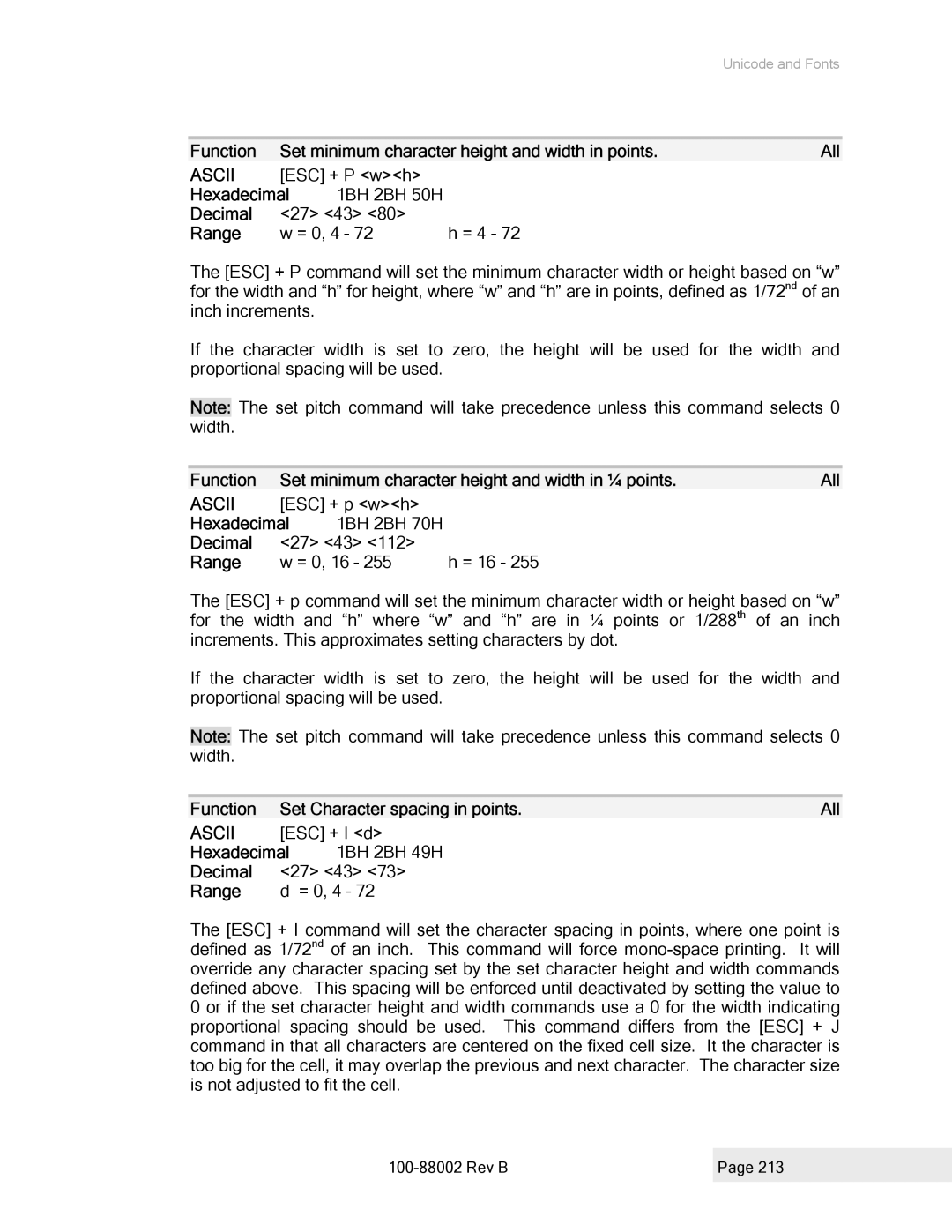Unicode and Fonts
Function | Set minimum character height and width in points. | All | ||
ASCII | [ESC] + P <w><h> |
|
| |
Hexadecimal | 1BH 2BH 50H |
|
| |
Decimal | <27> <43> <80> |
|
| |
Range | w = 0, 4 – 72 | h = 4 - 72 |
| |
The [ESC] + P command will set the minimum character width or height based on “w” for the width and “h” for height, where “w” and “h” are in points, defined as 1/72nd of an inch increments.
If the character width is set to zero, the height will be used for the width and proportional spacing will be used.
Note: The set pitch command will take precedence unless this command selects 0 width.
Function | Set minimum character height and width in ¼ points. | All | ||
ASCII | [ESC] + p <w><h> |
|
| |
Hexadecimal | 1BH 2BH 70H |
|
| |
Decimal | <27> <43> <112> |
|
| |
Range | w = 0, 16 – 255 | h = 16 - 255 |
| |
The [ESC] + p command will set the minimum character width or height based on “w” for the width and “h” where “w” and “h” are in ¼ points or 1/288th of an inch increments. This approximates setting characters by dot.
If the character width is set to zero, the height will be used for the width and proportional spacing will be used.
Note: The set pitch command will take precedence unless this command selects 0 width.
Function | Set Character spacing in points. | All | |
ASCII | [ESC] + I <d> |
| |
Hexadecimal | 1BH 2BH 49H |
| |
Decimal | <27> <43> <73> |
| |
Range | d | = 0, 4 – 72 |
|
The [ESC] + I command will set the character spacing in points, where one point is defined as 1/72nd of an inch. This command will force
| Page 213 |
|
|
